Mahmudabad/ Mahmoodabad, princely state
This is a collection of articles archived for the excellence of their content. Readers will be able to edit existing articles and post new articles directly |
Contents |
Raja Sahib Mahmoodabad
FROM THE Scrapbook
This letter, posted in 1874, from Karachi to Bombay, interestingly carries the postmark on the front with `KURRACHEE’ written on it and the delivery postmark on the back reads Karachi! This 132-year-old envelope is from the collection of Mohammed Siddick Faruk. If you have anything interesting and would like to share it with our readers, send it to us by post or at magazine@dawn.com.
April 16, 2006
REVIEWS: Another champion of the cause
Reviewed by Akhtar Payami
This is perhaps the most authentic and extensively documented work on the life and services of a true patriot. In pre-partition days, Raja Mahmoodabad was a household name in every Muslim family of India. He was the ideal of Muslim men and women. Here was a real prince who owned a state and had plenty of money to lead a life of comfort and luxury. But, like Siddhartha, he said goodbye to all the good things of life that money could offer. Willingly and by choice, he joined a struggle which created a homeland for the Muslims of the subcontinent but made him a pauper.
Raja Muhammad Amir Ahmad Khan never repented what he did for the success of the independence movement. But when he died in Britain in October, 1973 to be buried in Iran, he was a completely disillusioned man. “The Muslim League of the Quaid-i-Azam is dead and the country in whose creation the great leader had made so much investment does not exist,” the disenchanted Raja used to say in his despair and helplessness.
Raja Mahmoodabad may not be Jinnah‘s conscience keeper. But he certainly was a trusted lieutenant of the leader. Coming from a deeply religious family, in the beginning, he had his own concept of a welfare state which was different from what Jinnah visualised. Celebrated writer Curate Aim Hider has quoted an interesting dialogue between Jinnah and the Raja. The Raja had told Jinnah that in his view Pakistan would be governed by religious scholars as Islam was the moving spirit behind the independence movement. Jinnah’s reply was astounding and precise. He said, “What are you talking about Raja Sahib? Pakistan would be a modern, democratic state run on the universally recognised principles of democracy, justice and fairplay.”
Raja Mahmoodabad may not be Jinnah‘s conscience keeper. But he certainly was a trusted lieutenant of the leader
Khwaja Razi Haider, author of the book on Raja Mahmoodabad, is a senior research fellow and deputy director of the Quaid-i-Azam Academy. In his 25-year association with the academy, he has written several books on the main actors of the independence movement. A comprehensive book on Raja Sahib was indeed needed to fill in the gaps in Pakistan’s history. Dr Zawwar Husain Zaidi, chairman of the Quaid-i-Azam Academy, has commended Haider’s devotion and dedication in writing the book.
The writer gives a graphic account of the political developments in united India since the downfall of the Mughal empire. In fact, foreign influence made its appearance first in the 16th century with the arrival of the first English priest, Thomas Stephens, on the shore of Goa in 1579. It was in December 1600 that the British Queen issued an imperial proclamation allowing the East India Company to formally start trading in India.
The book gives a detailed description of the foundation of the Mahmoodabad state in 1569 by Nawab Mahmood Khan. Mahmoodabad’s history speaks of the political sagacity of its rulers since the early days of the inception of the kingdom. One thing is very clear. Those who remained at the helm of affairs in the state never played the role of hirelings of the British government. Maharaja Muhammad Ali Muhammad Khan, the father of Raja Muhammad Amir Ahmad Khan, played a key role in the politics of the subcontinent during a crucial period of history. The author discusses at length the factors that influenced the Muslim leaders of the time in their thinking about the participation of the minorities in national politics. In those days the Indian National Congres dominated the political scene. Many eminent Muslim leaders including Mohammad Ali Jinnah and Raja Mahmoodabad, who originally shared the views of the Congres and were ardent champions of Hindu Muslim unity, were now convinced that the Muslim cause could only be served by an exclusive organisation of the Muslims of India. This was a watershed in the political history of the country.
Haider has indeed rendered a great service to the cause of history and undiluted truth by giving an objective view of the life of Raja Sahib. Dr Zawwar Husain Zaidi, in the preface of the book, has referred to various incidents which bring into focus Raja Sahib’s idealism and the strength of his character. At a time when Jinnah’s ideals were completely forgotten by his successors, Raja Sahib continued to cling to the fast disappearing links. Neither did he hanker for power, nor did he try to grab the riches strewn all over the land. But his disgust at the unfortunate developments was so overpowering that he decided to leave the countrty for good.
It is perhaps the most opportune time for the Pakistani nation to recall the selfless devotion of Raja Sahib. As the country has deviated from the path of democracy chosen by Jinnah and as leaders have evolved their own interpretation of history, Raja Mahmoodabad’s life should serve to guide us through our perilously uncertain journey.
Raja Sahib Mahmoodabad: Hayat-o-Khidmaat
By Khwaja Razi Haider
Quaid-i-Azam Academy, 297
M.A. Jinnah Road, Karachi
ISBN 969-413-072-7
376pp. Rs300
A brief history
Nikita Doval, A raja’s 43-year battle to reclaim ancestral property, July 19, 2017: Livemint
The Raja of Mahmudabad has been fighting to claim his inheritance since 1974, despite being branded ‘enemy’ under the Enemy Property Act
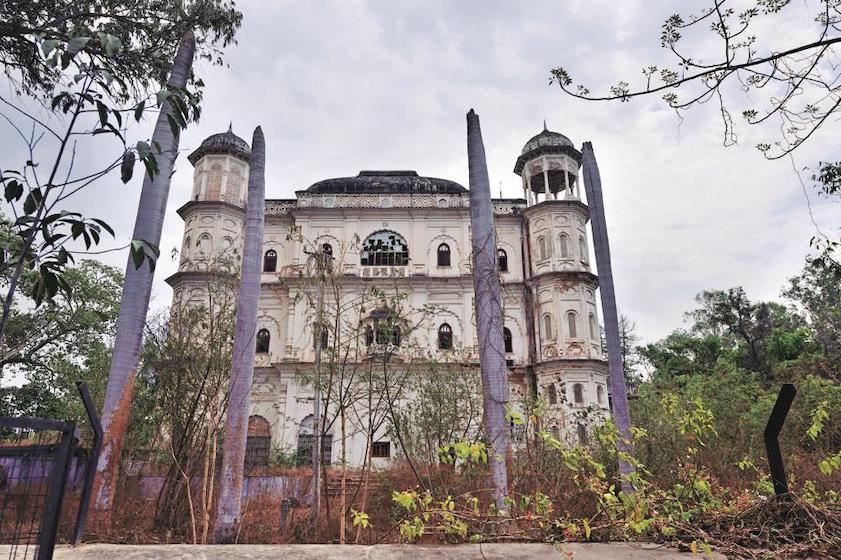
Mint
From: Nikita Doval, A raja’s 43-year battle to reclaim ancestral property, November 10, 2018: Livemint
At the entrance of Muqeem Manzil, the sprawling main hall of Mahmudabad Qila (fort), stands a guest table on which is perched a beautiful old world calendar bearing the Mahmudabad crest, two lions flanking a crown. The date card reads 23rd but none of my companions, local Waqf board members and the secretary to the present Raja, can tell me what the day, month or even year is. In many ways the old world calendar stuck on a particular date is an apt metaphor for the current state of the kingdom whose crest it bears.
Since 1974, Mohammad Amir Mohammad Khan, better known as the Raja of Mahmudabad, has been petitioning the government for the return of his properties but apart from a brief respite in 2005, the Raja’s heritage, spread across parts of Lucknow, Sitapur and Nainital, has been mired in litigation with him challenging the highest authority in India; the Indian government itself. It is a heritage that can be traced back to the 16th century and Emperor Akbar’s patronage, but today Khan has to struggle to not be labelled an enemy.
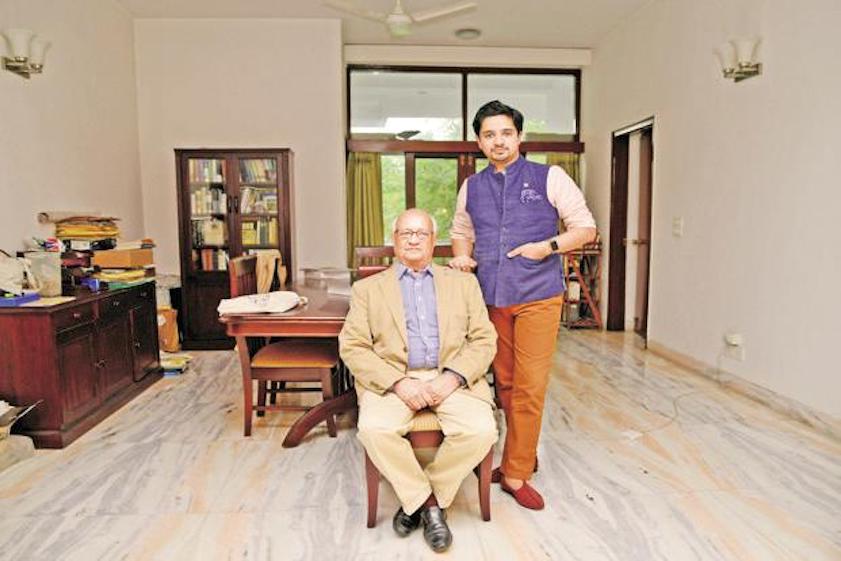
From: Nikita Doval, A raja’s 43-year battle to reclaim ancestral property, November 10, 2018: Livemint
In 1962 when war broke out between India and China, the government confiscated what it referred to as “enemy properties”, namely properties that belonged to a person or a country who or which was an enemy. This included not just Indian citizens of Chinese ethnicity but also those who had migrated to Pakistan during the partition. The same act was applicable during the 1965 India-Pakistan war. One of the people to migrate was a certain Mohammad Amir Ahmed Khan who had left India in 1947 but for Iraq. He eventually took Pakistani citizenship in 1957. This was the former Raja of Mahmudabad, father of Mohammad Khan, and by all accounts a close associate of Mohammed Ali Jinnah.
“I had just arrived in Cambridge to begin my undergraduate degree when our properties were taken over under the Defence of India Rules in 1965. In those days it took some time for news to travel from here to there and hence I learnt about it only a week after it had actually happened,” the Raja tells us.
An elegant man with just a hint of a British accent, the Raja peppers his conversation with quotes from classical Indian poetry to Western philosophers. Every question posed to him is an opportunity to share an anecdote from his family’s rich history which in modern times overlapped quite a bit with the birth of the nation.
He tells us how it was his uncle, his father’s younger brother, Maharaj Mohammed Amir Haider Khan, a barrister at law who practised in Bombay in the chambers of Sir Jamshedji Kanga, who explained just what the label enemy property meant, and why a huge chunk of his father’s inheritance had been taken over by the government. Interestingly both the Raja’s uncle, Haider Khan and his mother, Rani Kaniz Abid of Bilhera choose to stay on in India after partition and were Indian citizens.
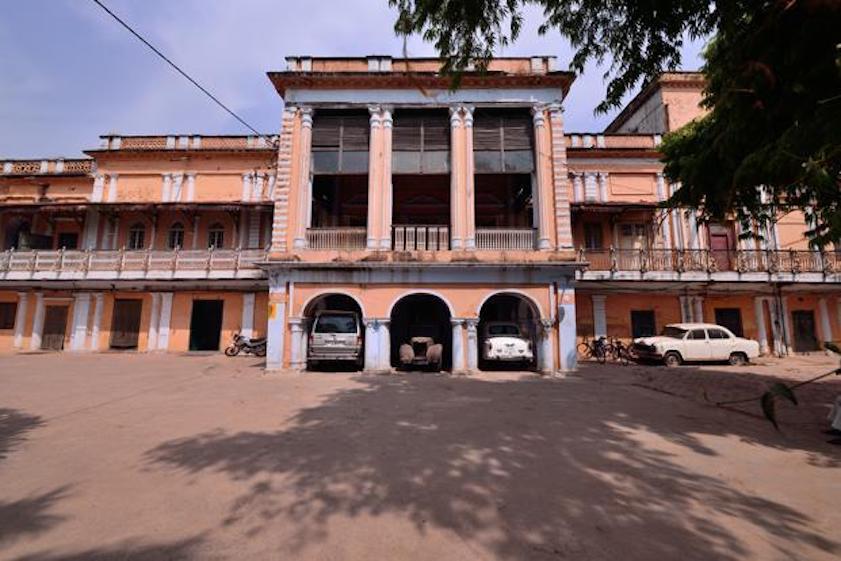
From: Nikita Doval, A raja’s 43-year battle to reclaim ancestral property, November 10, 2018: Livemint
The seized properties included Butler Palace, Mahmudabad Mansion, Lawrie Building and court in Lucknow’s Hazratganj. All these are prime real estate holdings, the court especially is a sprawling marketplace spread over 200,000 square feet.
Apart from these, the Mahmudabad estate’s holdings were spread over Sitapur, Nainital and of course in Mahmudabad itself. While some properties like those in commercial areas already had tenants staying, others were converted into government offices. In fact, Butler Palace situated smack bang in the middle of one of Lucknow’s toniest government colonies used to house the Indian Institute of Philosophical Research. “But it was the taking over of the Qila at Mahmudabad, the ancestral house, which is the venue of all our religious observances throughout the year for the entire community, where my mother actually lived and that was a big shock to me,” recalls the Raja.
The Qila in question is not just the family’s ancestral seat but also the religious and cultural hub of Mahmudabad, home to a large Shia community. Muharram, the first month of the Islamic calendar when the martyrdom of Imam Husain, the grandson of the Prophet, took place, is observed in all its solemnity by the community with the Qila and the shrines built by the Raja’s family as the focal venues.
“It is a very important centre for Mahmudabad both culturally and socially. We have scholars who come from far and wide to preach, all local communities, irrespective of their faiths are involved when Muharram is observed. This has been the tradition here for years and nothing can change it,” Ali Mohammad, the Raja’s secretary, explains to us as we walk around the Qila. It is a magnificent structure with colonnaded arches where many rooms still retain their original furniture right down to the beautiful expansive Persian carpets. The Mahmudabad crest shows up everywhere even as portions of the Qila remain locked up, slowly crumbling under the weight of neglect.
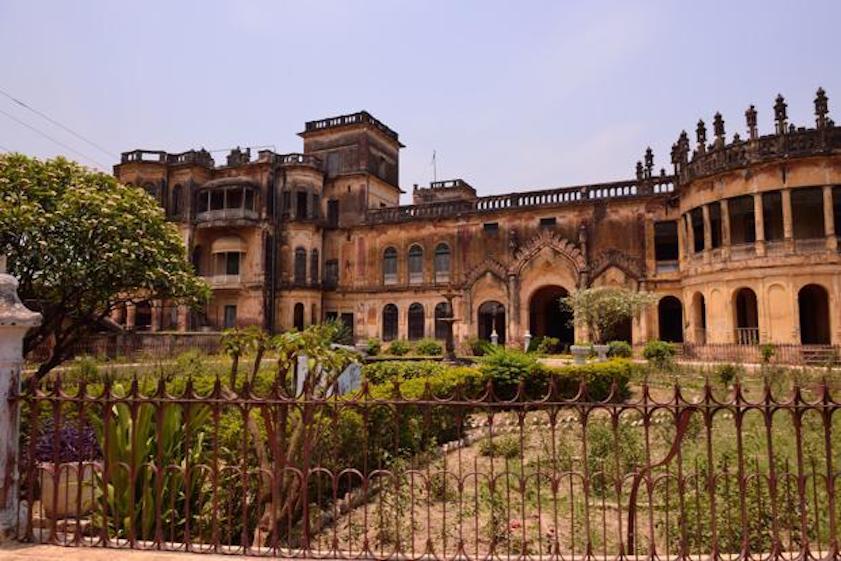
From: Nikita Doval, A raja’s 43-year battle to reclaim ancestral property, November 10, 2018: Livemint
The Qila was indeed taken over by the government in 1965 but since it is under the Waqf board, under an order of the court it was opened up again in eight months. “During those eight months, my mother, my father’s brother and his wife, who was also my mother’s sister, along with all the retainers, lived in the verandah, enduring what had come to pass. The government knew that substantial parts of the Qila are under the Waqf board and our observances have been taking place for centuries. A place like this could not be used against the disadvantage of the country,” reminisces the Raja.
It is still possible to catch a glimpse of how life would have been at the fort when the kingdom was at its peak. The number of families who live here has greatly diminished but they have all been in the service of the royal family for generations.
Muqeem Manzil, the entrance hall, leads to a library stacked with classics bound to make any book lover’s heart beat faster.
In Mahal Sarah, the ladies section of the fort, a group of women still sits everyday and painstakingly create beautiful chikan outfits under the label Qilasaaz which Vijaya Khan, Rani of Mahmudabad, oversees.
The Raja’s father died in London in 1973 where he moved soon after he took Pakistani citizenship, disillusioned as he was with his experience there.
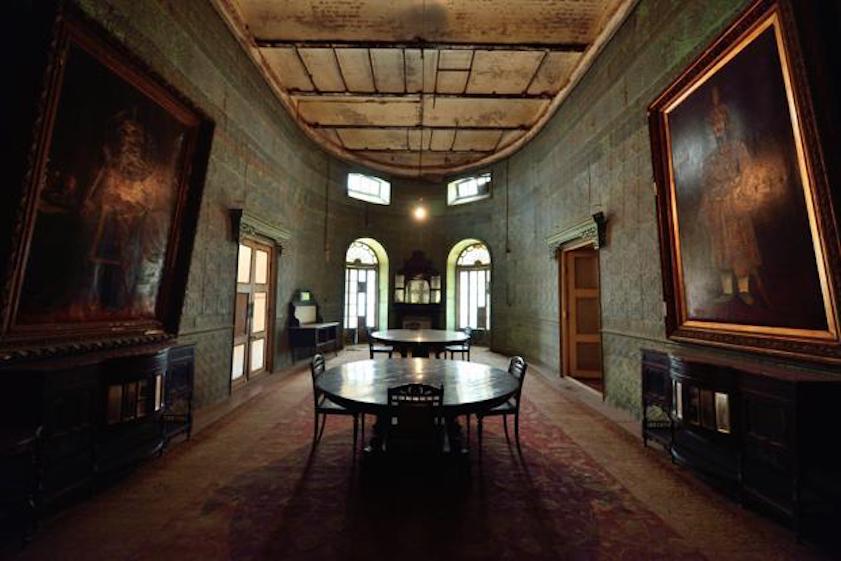
From: Nikita Doval, A raja’s 43-year battle to reclaim ancestral property, November 10, 2018: Livemint
“He was a Shia in a Sunni country, he did not speak any local language and had no roots in the countryside. He had roots only amongst the urban immigrants,” explains the Raja who was 14 years of age when he found out that his father had taken Pakistani citizenship. “I was in school and the term was ending. When I came back, I was told my mother was very unwell. She had a seizure of a terrible sort when she had heard about my father’s citizenship. My father had never asked her to go to Pakistan. It was a foregone conclusion that she would not even countenance it.”
This is a narrative which is slightly at odds with what the current government is pushing with finance minister Arun Jaitley even insisting in a Rajya Sabha debate that the Raja’s father had “sent” his wife and son back to India to claim citizenship.
“I have documentary government proof that we were never anything other than Indians,” claims the Raja.
But why is the Raja’s nationality being discussed in Parliament? The answer to that lies in a process that started in 1974 when he came back to India from Cambridge and petitioned the government to return the properties to the family.
The Enemy Property Act, 1968, categorically defined enemy property as belonging to a citizen of a country which was an enemy and with the passing of the Raja, the properties were bequeathed to his son who was an Indian citizen. Section 18 of the 1968 Act also includes a provision of the properties being returned on a special or general order by the central government, “in such manner as may be prescribed to the owner thereof or to such other person as may be specified in the direction…”
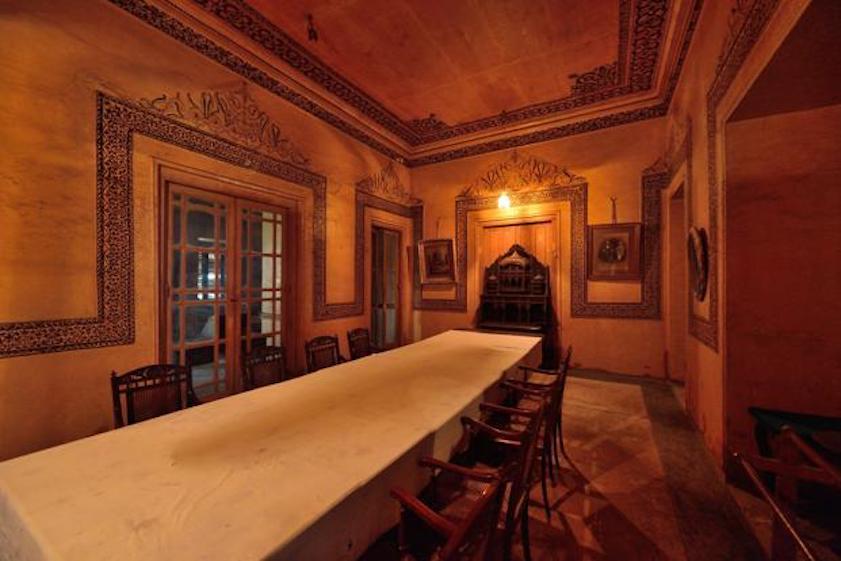
From: Nikita Doval, A raja’s 43-year battle to reclaim ancestral property, November 10, 2018: Livemint
The then young Raja met Morarji Desai, the then prime minister, who assured him the file would be examined. The Raja also met Indira Gandhi, the matter was taken up by the Union cabinet and by the end of 1980 he was informed that the properties will be returned to him but then it was said that only 25% of the properties will be returned.
“I was asked to furnish proof that I was my father’s legal heir. A succession certificate was required. The district court in Lucknow in 1986 gave a decision in my favour,” he says.
But the 25% clause remained and it is this that took the Raja to the Bombay high court seeking a return of his property in 1997. In between, there was stint with politics as a two-time MLA from Mahmudabad from the Congress party even though his struggle for his inheritance continued.
The Bombay high court returned the Raja’s entire property to him but the government then took up the matter in Supreme Court. And in 2005, the apex court gave what became a landmark and eventually a very contentious judgement. Declaring that enemy property is only vested with the custodian and that the Raja is a bona fide citizen of the state and not an enemy as defined by the Act, all of the Raja’s properties were returned to him.
It is a day the Raja still remembers clearly because he says that is the day his pride in India and his belief in the nation was reinforced. “It made me proud. I felt an injustice had been reversed,” he recalls.
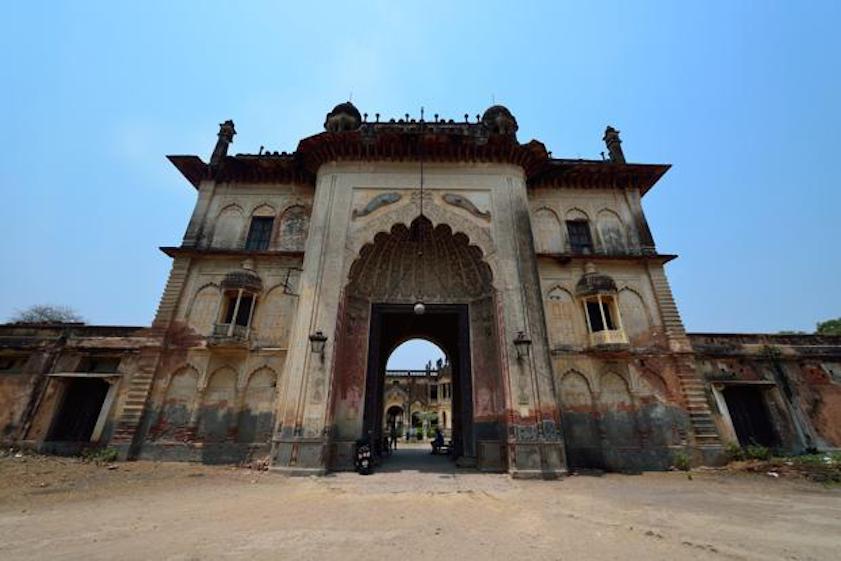
From: Nikita Doval, A raja’s 43-year battle to reclaim ancestral property, November 10, 2018: Livemint
But this was just the beginning of another round of struggle. For while properties like the heritage hotel Metropole in Nainital and Butler Palace in Lucknow were returned to the Raja, the holdings in Lucknow’s prime commercial area were occupied by tenants, most of whom were paying a pittance. Halwasiya court, for instance, which is home to several high-end showrooms, was given out on rent by the Raja’s father on a 90-year lease for a paltry amount of Rs600. After several meetings, perusal of property records, it was decided that the lease will be honoured.
From top brands to iconic restaurants, a lot of big names in Hazratganj, just across the road from Halwasiya court, are housed in Mahmudabad properties and pay rents in the vicinity of Rs500-1,000 per month. In December of last year, the district administration decided to revise the rent of enemy properties. A Hindustan Times report cited a government official as saying that shops run out of enemy property, especially in Hazratganj, will now pay 30% of the market rate which comes to Rs330 per sq. metre. The money will go to the government.
But even as these properties were not returned, work on the others began in full swing. The restoration of Metropole Hotel was undertaken by the Raja’s wife while Butler Palace too was being reimagined in all its previous glory.
“We borrowed from banks, put in our own money, developed Waqf land…and then one fine morning in 2010 I heard that the government is issuing an ordinance that seeks to amend the Enemy Property Act,” he says. It was the Raja’s worst nightmare come true. Overnight his properties were taken back and it was 1965 for the family all over again.
The ordinance which was introduced by the United Progressive Alliance government reportedly amid fears that the Supreme Court judgement will open a Pandora’s box of claims from others across the country, sought to amend the 1968 Act. On 17 March 2017, the amendments to the Act were passed which expanded the definition of enemy from the 1968 Act to include citizens of India who are the legal heirs and successors of the enemy or enemy subject.
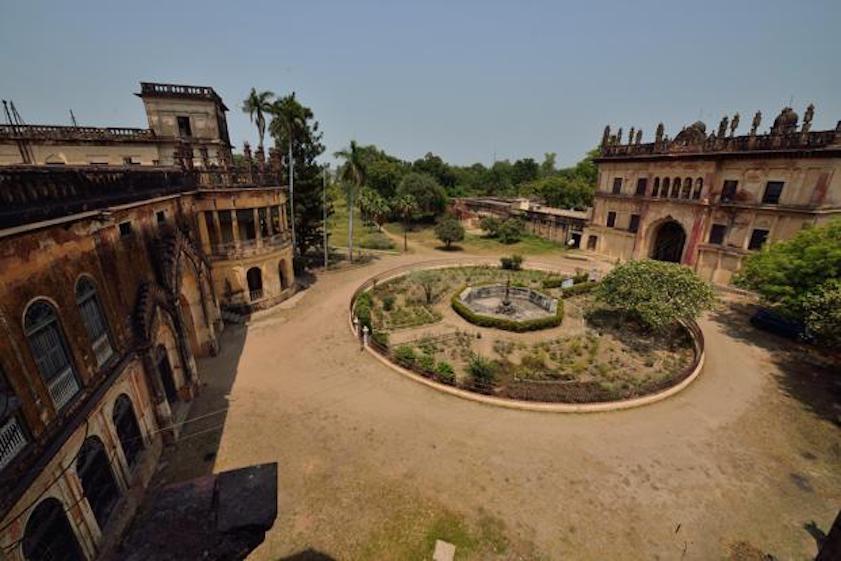
From: Nikita Doval, A raja’s 43-year battle to reclaim ancestral property, November 10, 2018: Livemint
The amendment also gave the government the right to sell the property, thereby implying that the owner of an enemy property was the state. In effect, all of the Raja’s properties were now the properties of the Indian government, laws of succession, Indian citizenship and the Supreme Court order notwithstanding.
“We fought 40 years for justice. We went to the government, we went to the court…we availed every recourse that is available to the citizen only to be told that it is retrospectively overturned. This is in the teeth of justice inequality,” says Khan, Rani of Mahmudabad.
The daughter of former foreign secretary Jagat Singh Mehta, Khan is a quiet woman who states her family’s disappointment and anger at the ordinance and the subsequent amendment in a definite manner. We are travelling in an ambassador from Lucknow to Mahmudabad as she tells us about the work that had started on all properties and just how cruelly they’ve been allowed to fall apart. Case in point is Butler Palace, which is almost in ruins. Grass as high as an adult’s waist impedes access to the building though it is no deterrent to the vandals who come here as evinced by the empty beer bottles one finds lying next to the gate. “To think there was a time when we would actually come here to have tea in the evening,” says Ali Mohammad, the Raja’s secretary, as he takes us for a walk around the properties in Lucknow.
Every member of the Raja’s family, be it his wife or two sons, is an independent authority on the Enemy Property Act and its amendment. The older son is a professor at Ashoka University who has written several editorials on the Act, while the younger son, who is pursuing his PhD, can discuss every amendment in the new Act threadbare.
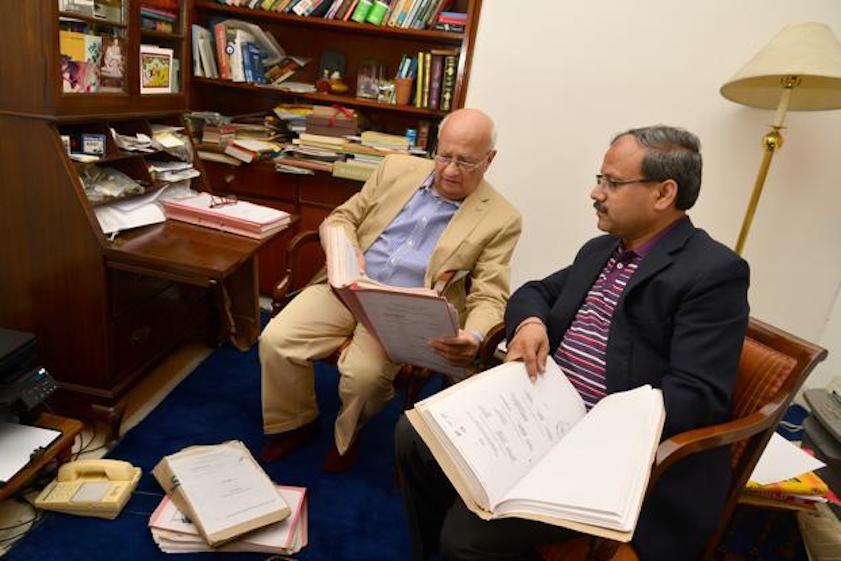
From: Nikita Doval, A raja’s 43-year battle to reclaim ancestral property, November 10, 2018: Livemint
There is a palpable sense of anger but what stings most is the usage of the word enemy. “Here I am, sitting next to you and I am an enemy. This Act has created deep distress, especially financial. The only thing we have is the benefit of education which enables us to realize that anger and cynicism are futile,” says Khan, Rani of Mahmudabad.
There is a palpable feeling that the ordinance and the subsequent amendments were brought in to target the family specifically though no one says so outright. In fact, the ruling party’s defence in Rajya Sabha during the debate for the passing of the bill centred mostly around the Raja’s case, with it being said that the former Raja, “who threw his weight behind the idea of a separate Muslim nation” sent his wife and son “back to become Indian citizens and claim Indian property”. Finance minister Jaitley also said that the Raja’s family had lost the title to the properties in 1965 so the question of inheriting these does not arise.
The Raja currently has a writ petition in the Supreme Court but the fate of it remains up in the air. Niraj Gupta, his advocate, worries about the powers vested in the custodian given that the office has come under the radar for some questionable deals. The former custodian of enemy property Dinesh Singh, an IRS officer, was recommended for criminal action by the Central Bureau of Investigation for helping a developer acquire an enemy property.
There have been several cases against enemy properties in Indian courts with few settlements being in the favour of the custodian of enemy property, as neither the rights of the legal heirs of the enemy or the duties of the custodian were ever clearly defined.
However, none of these cases have been as high-profile as that of the Raja of Mahmudabad’s given his family legacy, the association with Jinnah and the sheer magnitude of the real estate at stake. The amendment to the Act, however, removes all ambiguity vis-à-vis ownership while attempting to create a different class of citizens, the children of enemies. This is a clear violation of Article 14 of the Constitution which guarantees the right to equality and it is perhaps on this ground that the amendment can be challenged.
Till then the Raja, who in William Dalrymple’s Age of Kali, had said visiting Mahmudabad brings him “terrible bouts of gloom”, sits in his well-appointed living room in New Delhi waiting to see what new curve ball life throws at him.
“However, I will always be able to say that I did get justice in this country,” he concludes. The semblance of it, in the form of the 2005 Supreme Court judgement is perhaps the only victory he can savour from the fight that has taken over his entire life.
Property dispute
2020: Assets worth ₹421cr to be seized
December 28, 2020: The Times of India
After a prolonged legal battle lasting 13 years, the claim of Mohammad Amir Mohammad Khan (better known as Raja of Mahmudabad) over 422 hectare of land spread across three districts — Sitapur, Barabanki and Lakhimpur Kheri — was rejected by the Lucknow revenue court of ADM, administration, Amarpal Singh.
The property, which is worth Rs 421 crore, will now be confiscated by the state government. According to the verdict, 388.301 hectares of land in 179 villages of Sitapur, 10.659 hectares in 31 villages of Lakhimpur Kheri and 23.045 hectares in 21 villages of Barabanki would be confiscated.
Talking to TOI, ADM Amar Pal Singh said, “The plaintiff has every right to appeal against the judgement for a review. The market value of the declared land is close to Rs 421 crore. Out of this, the land in Sitapur is worth Rs 388 crore, the one in Lakhimpur Kheri of Rs 11 crore and in Barabanki worth about Rs 23 crore.” TNN
Mohammad Amir Mohammad Khan
Shailvee Sharda, Oct 6, 2023: The Times of India
Mohammad Amir Mohammad Khan was a ‘raja’, an astrophysicist, an erudite speaker and host to many. He also fought a four-decade-long battle to try reclaim to his family’s property
He wasn’t an ‘enemy’, he said, and fought in court after court for nearly four decades to prove his point. He almost won and then lost everything again. Such was the drama, such was his dogged pursuit, that Mohammad Amir Mohammad Khan, who died on October 3 at 80, became famous — as the man who symbolised the battle between individuals and governments over ‘enemy property’, as the son who in vain tried to absolve himself from the ‘sins’ of his father.That was sad in a way, for his life outside those legal jousts did not lack for colour. Khan was a gifted astrophysicist who did not pursue his calling, an occasional politician who found politics distasteful, a ‘raja’ who lived in a palace but didn’t set much store by ‘nobility’. He could quote from the classics of poetry — works of Yeats were a favourite — and was a gifted speaker, in English, Urdu and Persian.On his death, those who knew him well remembered his gentility, his erudition, which he wore lightly, his courtesy and his generous hospitality. Those who only knew of him would have tried to recall the many twists in the Khan versus government court battles.
History of ‘Raja of Mahamudabad’Raja of Mahmudabad, as Khan was popularly known — Mahmudabad is around 60km from Lucknow — might well have had a life defined by his academic gifts and his family’s considerable wealth. Mahmudabad was said to have been named after Nawab Mahmud Khan, who was a key taluqdar during Mughal rule. Taluqdars were landowners who also collected revenue for the kingdom. Nawab Mahmud Khan, was said to have received the titles of ‘Nawab’ and ‘Khan Bahadur’ from Emperor Akbar for his exemplary display of valour in battles. The official website of the Mahmudabad estate states that Muqimuddaulah Raja Nawab Ali Khan fought along Begum Hazrat Mahal against the British during the 1857 revolt. A change in fortunesThe course of Khan’s life was set differently when his father took Pakistani citizenship in 1950. Khan’s family moved to the city of Karbala in Iraq the same year, where he learned Arabic and Persian. His family then returned to Lucknow and he was enrolled at the La Martiniere College for his schooling. Khan then went on to study mathematics at Cambridge University in England and obtained a degree in theoretical and space physics from Imperial College, London. He pursued his PhD at the Institute of Astronomy at Cambridge thanks to Sir Fred Hoyle, a famous mathematician and astrophysicist. A fluent orator, he was a guest lecturer at the two institutes.
When Pakistan attacked India in 1965, the then government passed the Enemy Properties in India Act in 1968. Khan had by then been in India for years, his family having returned from Pakistan in 1953.The Khan family’s property was seized, despite, as he said throughout his life, his own incontrovertible Indian citizenship, a fact buttressed by him fighting elections on Congress tickets in 1985 and 1989. He later withdrew from active politics claiming it was “corrupt and criminalised”. In 2004, he contested the Lok Sabha election, but lost.The long legal battleThe legal battles started in 1974. In 2005, he thought he had won. The Supreme Court restored the raja’s properties in UP and Uttarakhand to him. The estimated worth of these properties was pegged at over Rs 50,000 crore. By some measures, nearly half of Lucknow’s prominent market Hazratganj and Sitapur belonged to the Khan family. Not surprisingly the occupants of these properties, in many cases the government itself, decided to challenge the order and filed a revision petition in the apex court.Khan lost this time. The properties were given to a state custodian to administer. The hammer blow came when the Indian government amended the enemy properties law in 2014, moved in to take custody of these properties, and declared that a family member of an ‘enemy’ was also to be considered an ‘enemy’.
The raja withdrew from active politics claiming it was "corrupt and criminalised”.
The raja challenged the law in 2017. When he died on Tuesday, after prolonged illness, the case was still pending.In a television interview in 2017, he bemoaned his legal battles. “Only my father took the Pakistani nationality. I have always been an Indian and so does my mother. We had to fight our case from the lowest to the highest court. And in every court, we won, and the Supreme Court judge said that by no stretch of imagination could I be considered as an enemy and considered me to be the heir to my father’s properties,” Khan said.The suspended legal battle wasn’t the epitaph the Raja of Mahmudabad would have wanted. Only a few may remember him as he might have wanted to be remembered, by these words of Yates he quoted often: “I press my heart upon the loveliness that has long faded from the world”.